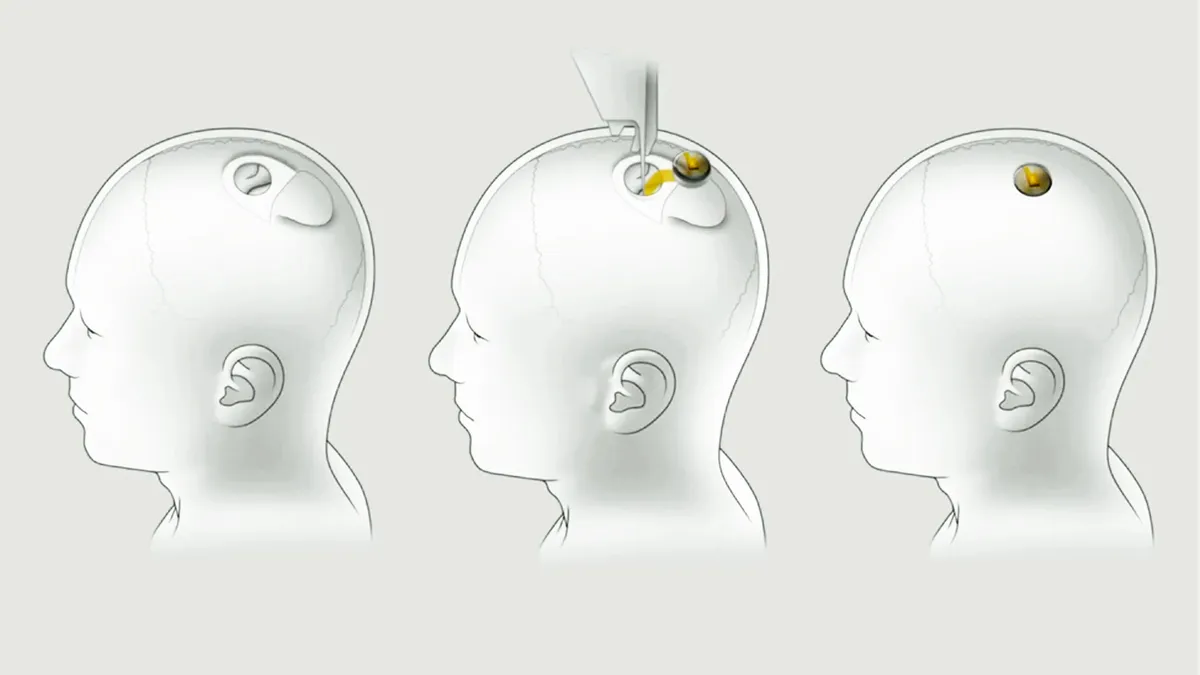Neuralink, the brain-computer interface (BCI) company revolutionized by entrepreneur Elon Musk, has recently achieved a significant milestone by successfully implanting a “brain-reading” device into a human patient for the first time, as revealed in a tweet shared by Musk on January 29.
The brain chip that Neuralink is developing, about the size of a coin, is designed to be embedded into a person’s skull. Once the chip is implanted into the patient’s brain, an array of 64 minuscule wires, each approximately 20 times thinner than a strand of human hair, will fan out 1024 electrodes in all directions. The patient, who wasn’t identified, “is recovering well,” Musk said via X, formerly known as Twitter. “Initial results show promising neuron spike detection.”
This announcement from Musk follows months of Neuralink’s efforts to recruit patients for its clinical trial involving human subjects. In May of 2023, the company got approval from the Food and Drug Administration (FDA) for the trial, with a focus on enlisting individuals aged 22 and older who are suffering from quadriplegia caused by spinal cord injuries or amyotrophic lateral sclerosis (ALS), a condition that impairs motor function.
Musk’s human trial also utilizes a robot during surgery. Neuralink’s clinical trial, dubbed PRIME (Precise Robotically Implanted Brain-Computer Interface), uses robotic assistance to surgically insert the company’s implant into a specific area of the brain associated with movement. “The device is designed to interpret a person’s neural activity, so they can operate a computer or smartphone by simply intending to move,” Neuralink said as it called for volunteers. “No wires or physical movement are required.”
Neuralink says its implant procedure utilizes specialized microscopic needles tailored for the purpose. As the company said last October on X, “The tip is only 10 to 12 microns in width—only slightly larger than the diameter of a red blood cell. The small size allows threads to be inserted with minimal damage to the cortex.” In a promotional video, Neuralink explained that the objective of the PRIME trial is to implant “a small cosmetically invisible implant in a part of your brain that plans movement.”
Before this recent human test, Musk had also experimented with his chips on animals several times. In 2020, Neuralink showed off one of its chip-embedded in a pig named Gertrude. The demonstration served as a proof of concept, illustrating the chip’s ability to precisely anticipate the movements of Gertrude’s limbs as she walked on a treadmill, while also capturing neural activity as the pig searched for food. Musk noted that Gertude had been implanted with the chip in her skull for two months prior to the demonstration.
Neuralink even went one step further with its animal demonstrations in April 2021, when it showed off a monkey playing video games with its mind. Neuralink released video footage of a macaque monkey named Pager playing video games such as “Pong” with banana smoothies as rewards. Pager played the games using a joystick that was not physically connected to the gaming console, allowing him to control the cursor solely through the signals emitted by his brain as he moved his arm.
Although one may easily get the impression that Musk’s boasts on letting monkeys control computers with their brain signals is a groundbreaking discovery, neuroscientists actually don’t see it as such a big deal. Neuroscientists interviewed by Business Insider in 2019 said that while Musk’s claim might attract readers’ attention, they did not deem it surprising or even particularly impressive. “The monkey is not surfing the internet. [It] is probably moving a cursor to move a little ball to try to match a target,” Professor Andrew Hires, an assistant professor of neurobiology at the University of California, said.
However, even before Neuralink’s accomplishments, primates have been implanted with neural-brain interfaces that enable them to manipulate objects on screens. Professor Andrew Jackson from the University of Newcastle told Insider in April 2021 that researchers initially developed this technology in 2022, although its roots arguably even trace back to the 1960s.
Musk also faced significant criticism and backlash as a result of his various implant experiments on animals. In February 2022, animal rights groups such as the Physicians Committee for Responsible Medicine submitted a complaint to the US Department of Agriculture after obtaining more than 700 pages of documents relating to monkeys used in Neuralink’s research at the University of California, Davis between 2017 and 2020. “We strive to provide the best possible care to animals in our charge. Animal research is strictly regulated and UC Davis follows all applicable laws and regulations including those of the US Department of Agriculture,” the university said in a statement that same month.
Despite the criticism that Musk faces, the idea of neural implants could potentially be revolutionizing in the future as it becomes more advanced, even if it may not be the most futuristic idea at the moment. With such methods, scientists would be able to see what goes through the minds of organisms as they perform everyday activities, a practice that could likely face security and privacy issues in the future.













































































































































